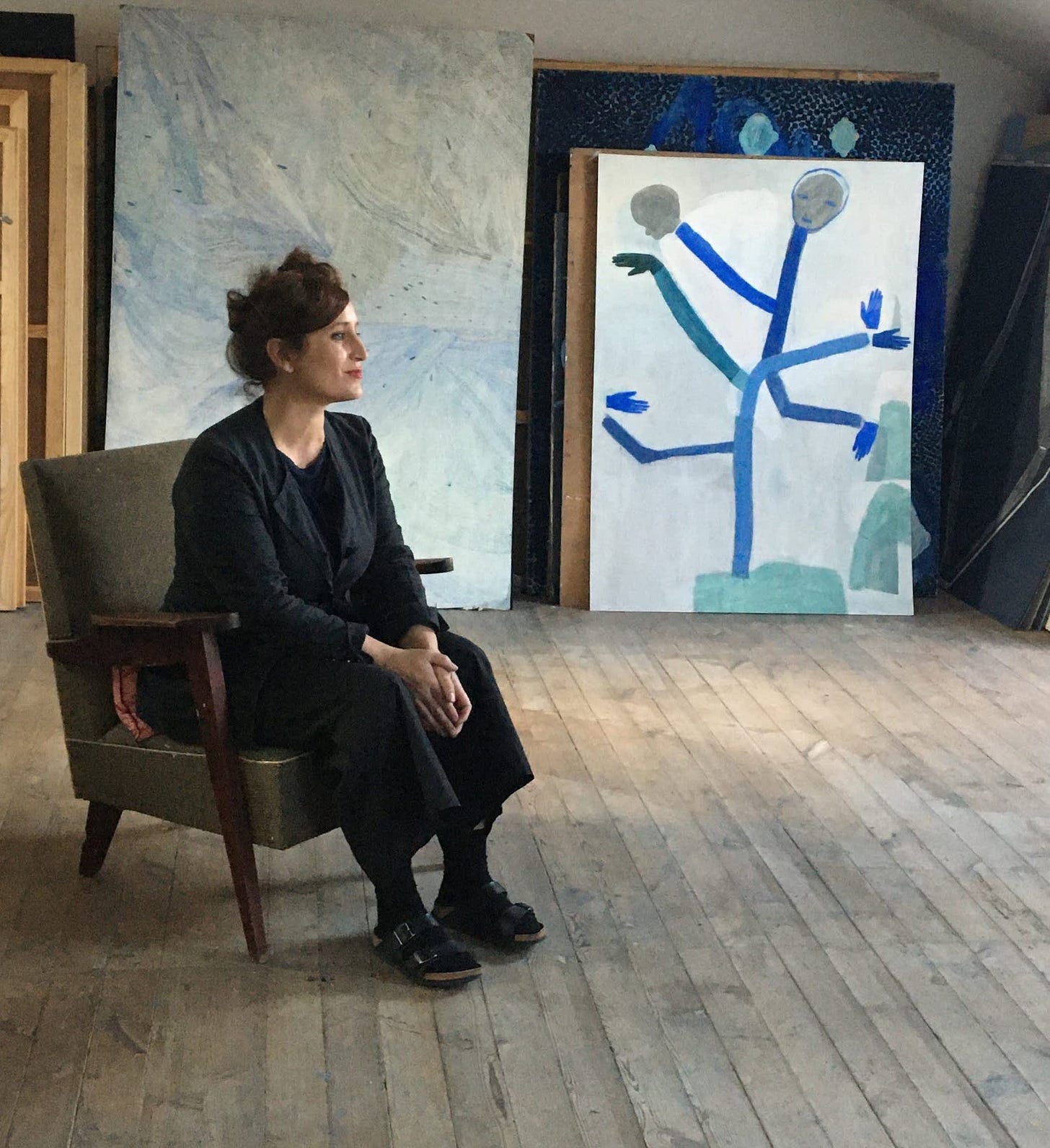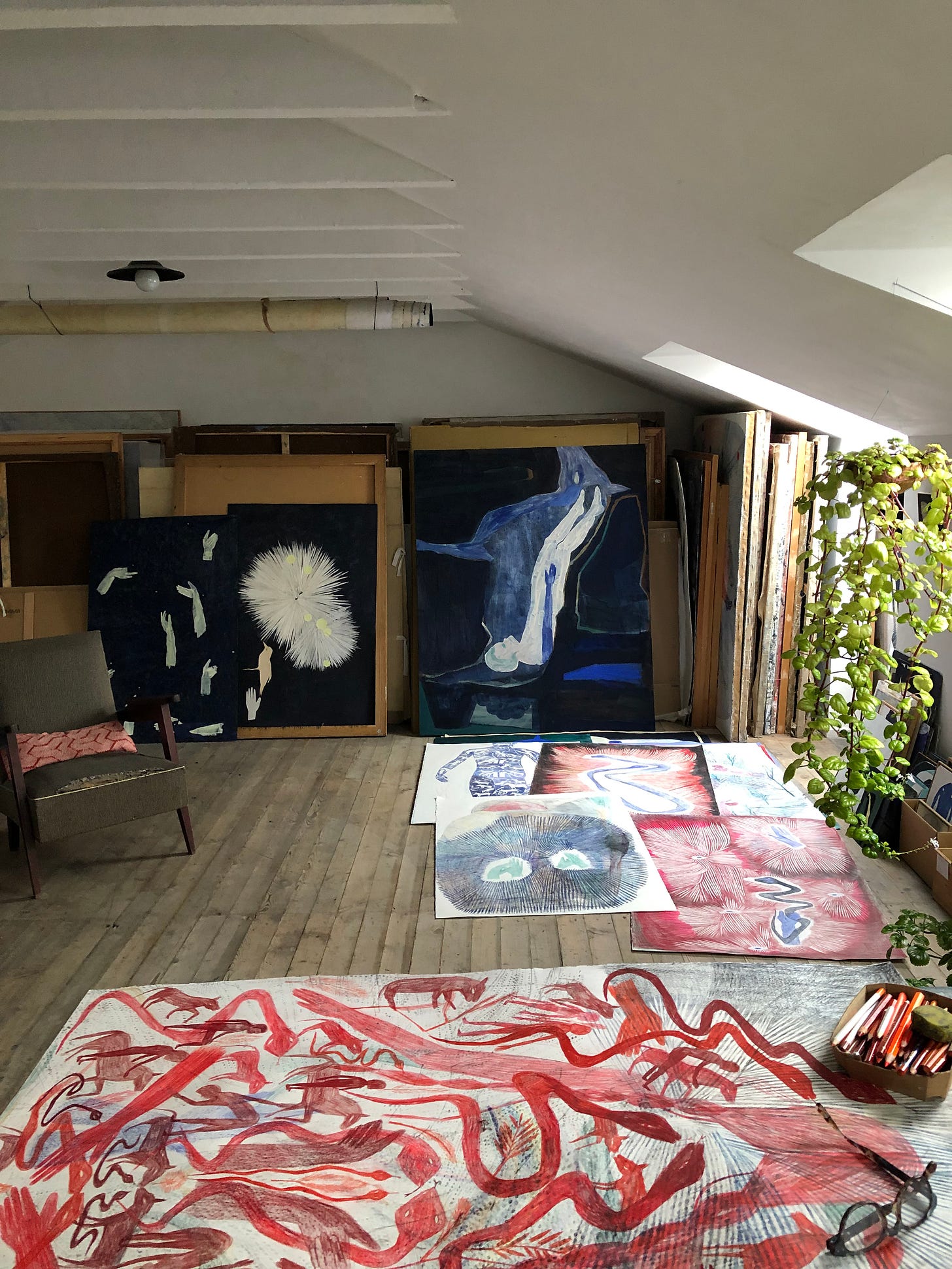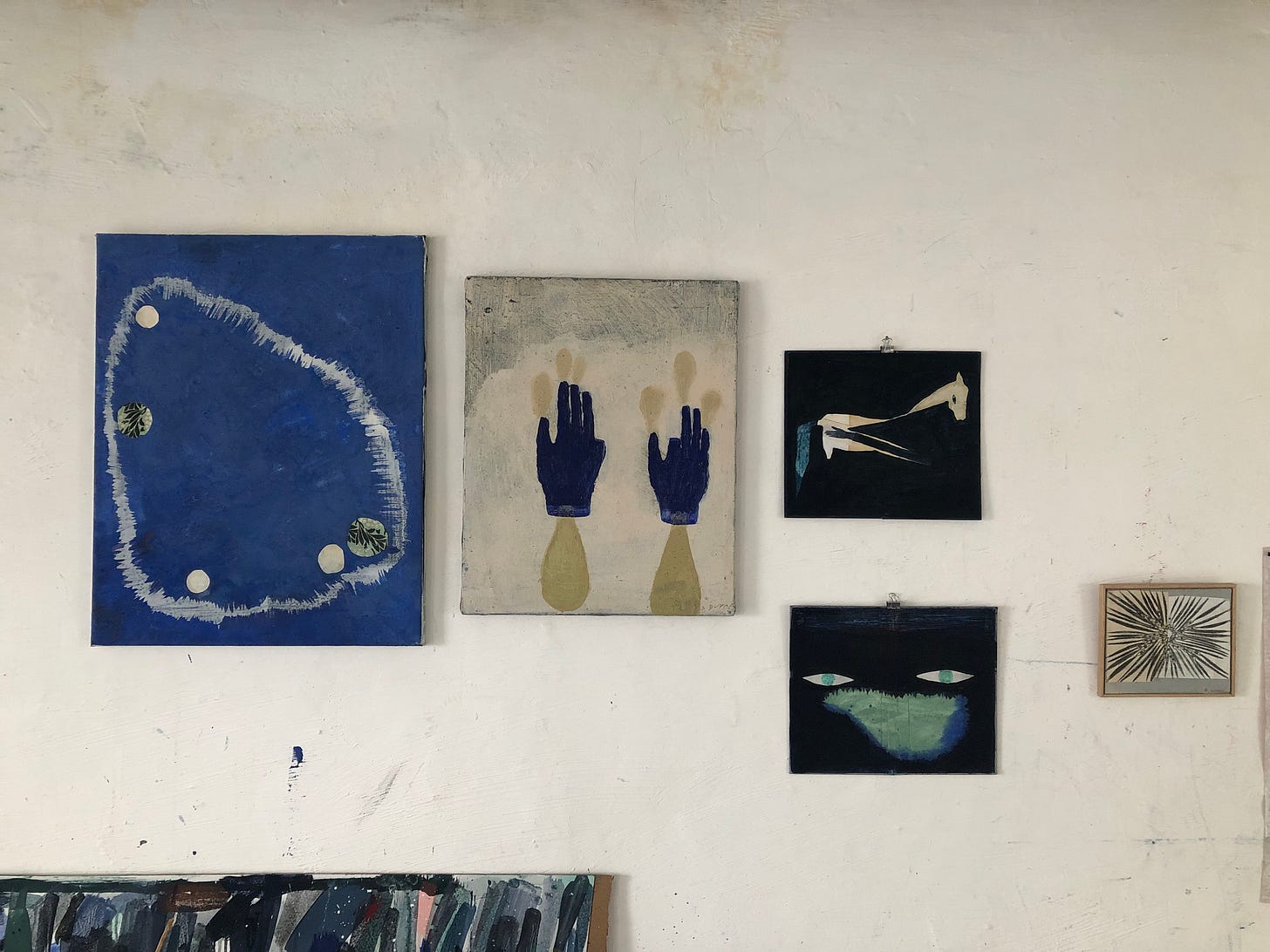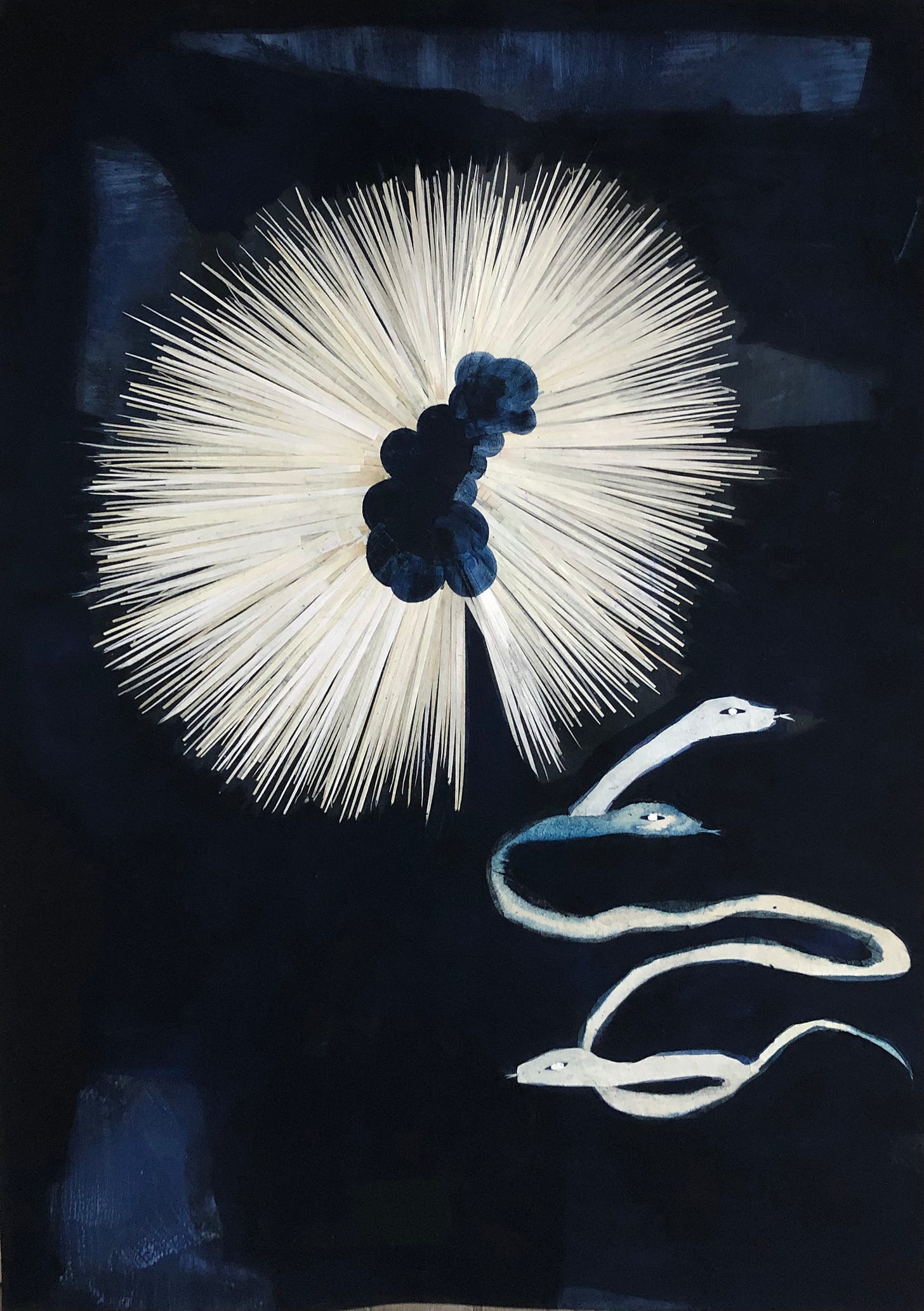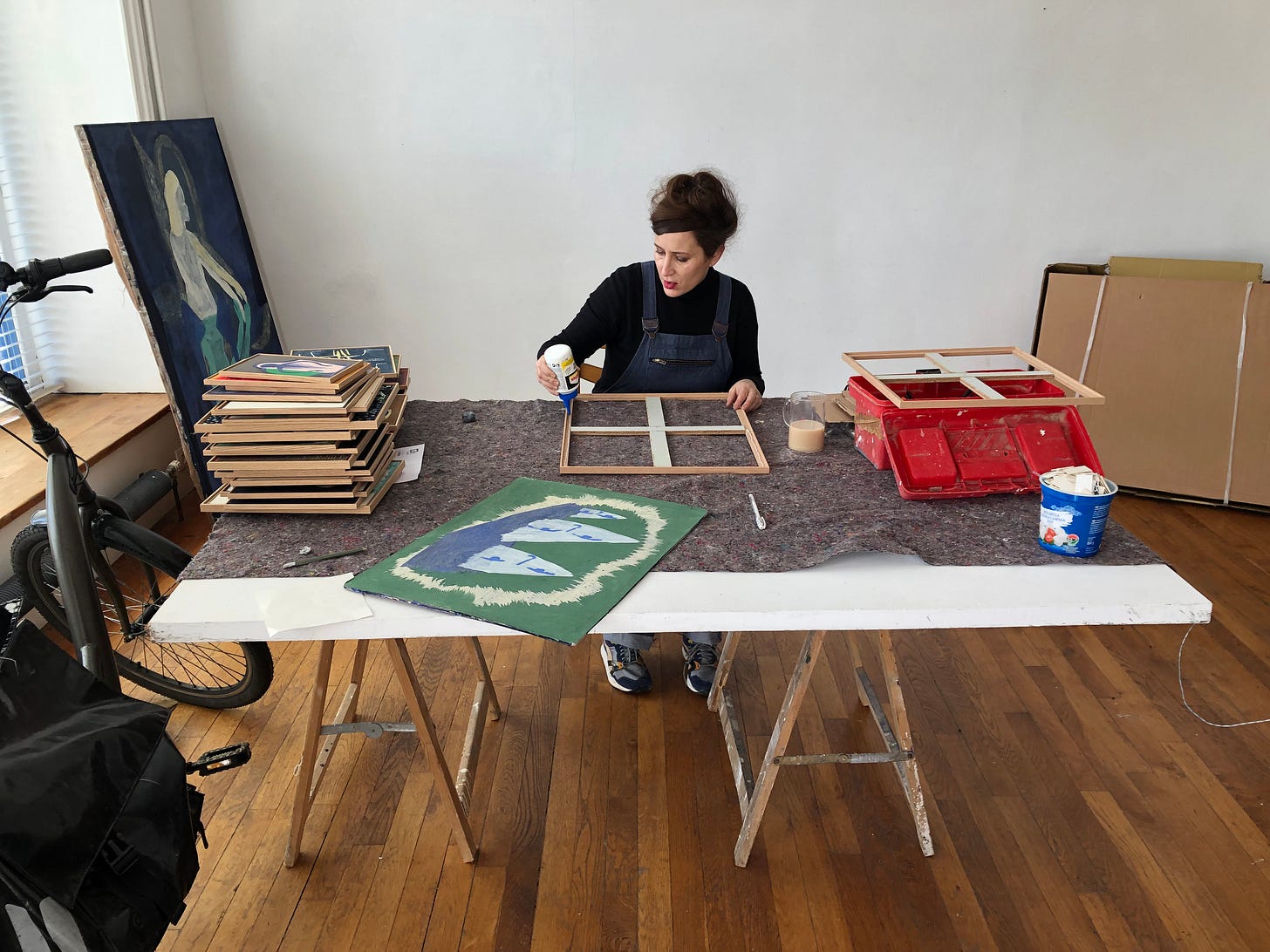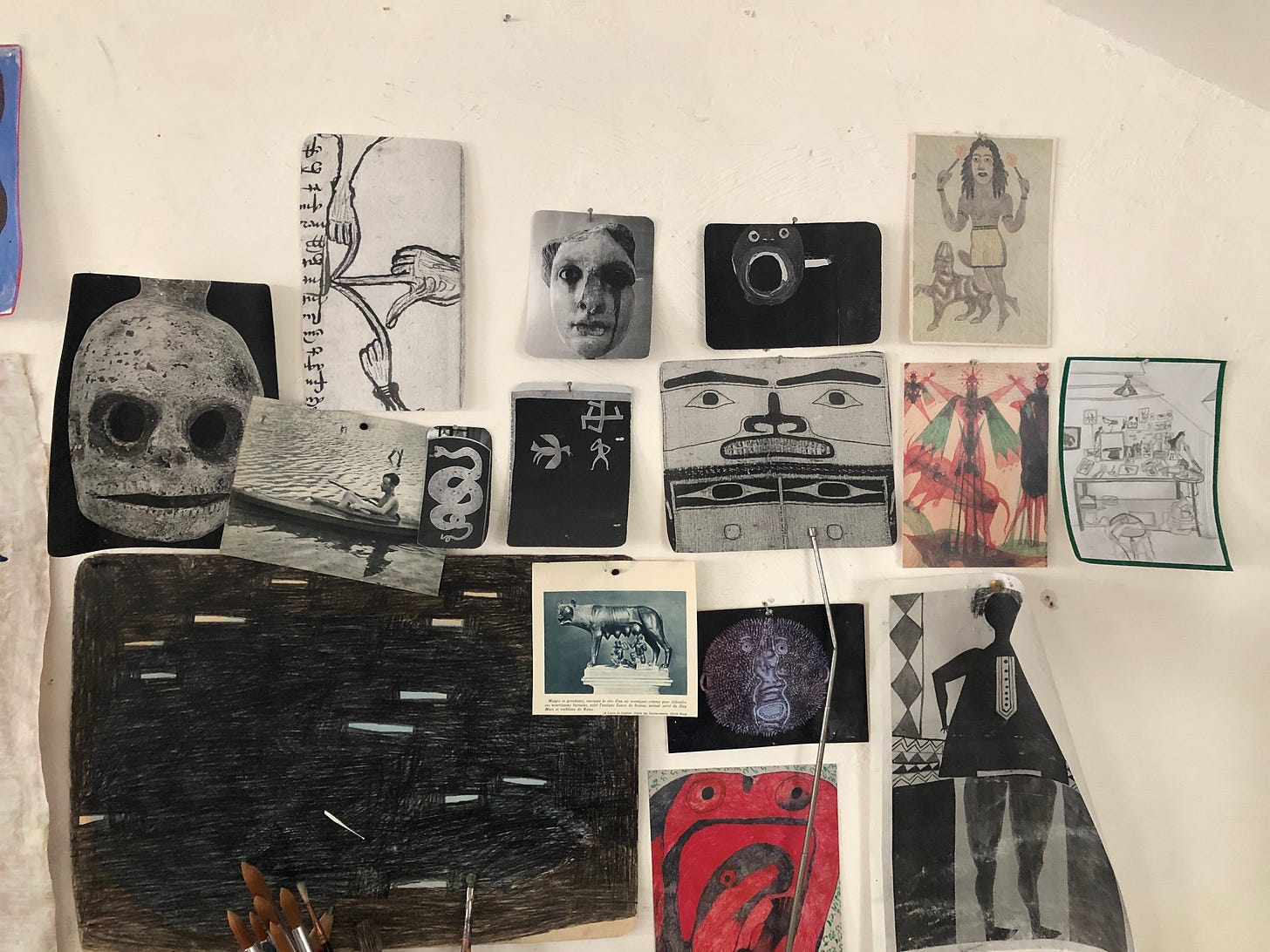Alexandra Duprez
Mepaintsme spoke with the artist to discuss growing up in Brittany, inspirations, and the importance of routines.
In Alexandra Duprez's drawings, paintings and collages, the human form is sensitively interpreted using a balance of abstraction and symbolic gesture. Shaped from her early encounters with Aboriginal art, Duprez silhouettes the human form and intermingles mystical elements of various orders: limbs, snakes, and waves of energy. These concurrences of iconography point us toward a spiritual energy entangled with the unconscious.
MPM: Thank you for taking the time to discuss your work and see your studio. So where are you originally from?
AD: I spent my entire childhood in a small village in Brittany, France. My parents had built a house on a housing estate. All the houses looked alike. I spent a lot of time hanging out in the streets in front of the house with friends.
MPM: Were you always interested in making art?
AD: I started painting quite late. I wasn't a child who spent a lot of time drawing. I did have a great imagination for games and have always been very fond of DIY — I'd like to tidy up my room and decorate it. I didn't go to museums at all. There weren't any where I lived. We had a lithograph at home, because in those days there were salesmen in the housing estates with big catalogs, and my parents had bought this silkscreen print which was on the mantelpiece.
MPM:Your work feels as if the imagery is arrived at through the material process. How would you describe your approach?
AD: Apart from the times when I'm in the studio, I have to admit that my mind isn't always on the composition of a painting. The idea often comes when I'm sitting down in front of the canvas or sheet of paper. I often have a rather vague idea, and most of the time I'm rarely happy with what I've just done. So I cover it up with patches of paper. And that's how the images appear. There are times when I'm in fusion with what's going on in the studio, and sometimes there are weeks of great emptiness, where, despite the fact that I draw a lot, nothing suits me. These are periods that I find quite hard on my morale. But in the end, I think it's important to go through them anyway.
MPM: You are very prolific and produce a lot of work. Could you describe a typical workday in your studio?
AD: I work every day except weekends. I've kept some habits from the days when I had three children at home. But I've always worked. I'm lucky enough to live in a small fishing port. Every day, around 8:30 a.m., I go swimming — even in winter. It's important to me because a painter's life is an indoor life and I like to start the day by breathing and seeing the sky above my head. I usually start work around 9:30 a.m., and take a break for lunch with my partner, who is also a painter. I start again around 1 p.m. and finish around 5:30-6 p.m. I never see the time go by, and I love spending my days in the studio. I like routine because it reassures me. I rarely do anything else, but I also like to be disturbed, which I realize is paradoxical. Sometimes during the day, I'll do things like hang out the washing or make pizza dough. I also make administrative phone calls during repetitive drawings.
MPM: I’m curious as to your influences. You have spoken about the strong presence of Aboriginal art in your work. Are there any other particular artists or designers that have had an impact on your art?
AD: To tell the truth, it was when I was 16 that I first saw paintings of Aboriginal art, and it made a strong impression on me. Now, I'd say I'm more influenced by other things: art brut, Shinichi Sawada, Asafo flags, Giovanni Bosco, Josef Hofer...
MPM: Which do you prefer most — working small or large?
AD: I really like both. I like alternating. Some weeks I only do small formats and some weeks I only do large formats. Above all, I like to alternate my body positions. Either I'm standing in front of a canvas or I'm sitting down.
I have to admit that drawing on small formats is quite comfortable, and it's important not to lock yourself into that comfort with a small room in front of you. I also like to alternate between small and large formats in my exhibitions.
MPM: Are there any other creative forms outside of art, like writing or music, that guide you in your practice?
AD: I'm often attracted to and inspired by art brut creators, Folk art, handmade textiles, Inuit art. I love Giovanni Bosco. I like to pick up books at random in my local library. I like dark books. I often read Gallmeister books.
MPM: Do you listen to music when you work in the studio? What music are you currently listening to?
AD: I listen to a lot of music during the day in the workshop. When I'm in a really good mood, I like to listen to music that makes you dance and feel great. I also listen to podcasts. I listen to Les pieds sur terre on France Culture and the LSD program, too. I also like to listen to criminal investigations.
Alexandra Duprez currently has solo shows at Galerie DYS in Brussels @galeriedys and Galerie Albrecht in Berlin @galeriealbrecht, and is included in the group exhibition Disparate Visions at Jack Hanley Gallery in NYC @jackhanleygallery.
ALEXANDRA DUPREZ has original works available at MEPAINTSME.COM
Sign up for our free newsletter to receive weekly artist interviews here:




